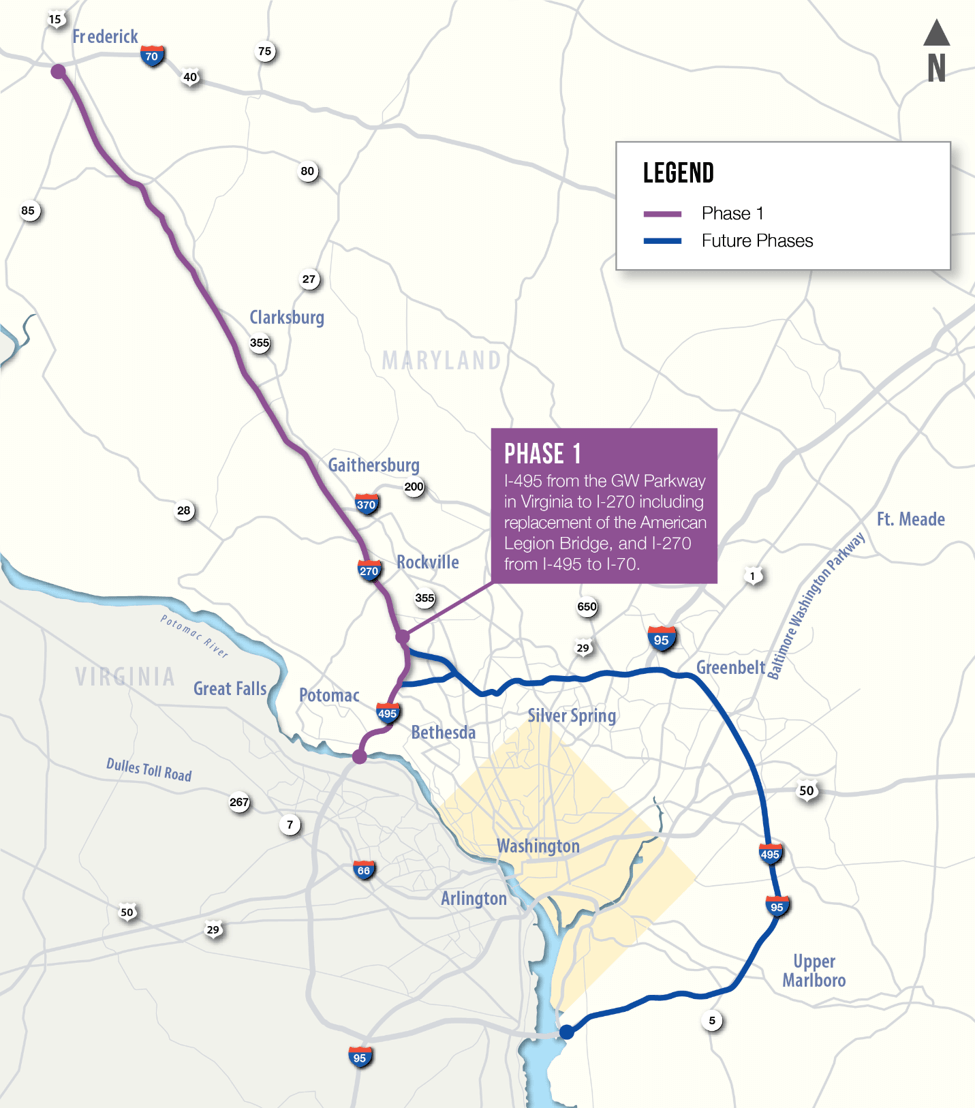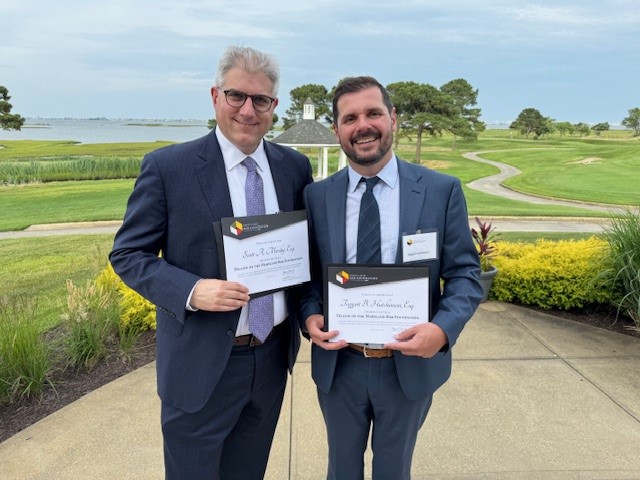 If you live in Montgomery or Prince George’s Counties, or you regularly commute into Washington D.C. or Northern Virginia, you are likely already aware of plans to widen the I-495 Beltway and I-270 to make way for new toll lanes. Miller, Miller & Canby’s eminent domain and condemnation attorneys are closely monitoring this major infrastructure project.
If you live in Montgomery or Prince George’s Counties, or you regularly commute into Washington D.C. or Northern Virginia, you are likely already aware of plans to widen the I-495 Beltway and I-270 to make way for new toll lanes. Miller, Miller & Canby’s eminent domain and condemnation attorneys are closely monitoring this major infrastructure project.
The Landscape
This project is a priority of Governor Hogan, which is emerging out of the I-495 & I-270 Managed Lanes Study launched in March 2018 by Maryland Department of Transportation’s State Highway Administration (MDOT SHA). A Public-Private Partnership (P3) has been established to manage and indeed fund the project’s development, design and construction. The P3 releases periodic newsletters and maintains this project website.
On January 8, 2020, Maryland’s Board of Public Works (BPW), comprised of the Governor, Treasurer and Comptroller, voted 2-1 to approve Phase-1 of the project. On February 7th the P3 posted an announcement on its website (click here to view) clarifying that the BPW’s vote “only allows the solicitation process to move forward for a Phase Developer to assist the MDOT SHA with preliminary development and design activities, which is allowable under federal regulations.” Once the project’s new toll lanes are constructed, the P3’s development contractor will retain some level of ownership interest in those lanes while operating and maintaining them for a given time period – purportedly 50 years.
Prior to January’s BPW vote, the National Environmental Policy Act (NEPA) process was already well underway for the I-495 & I-270 Managed Lanes Study. In fact, the Draft Environmental Impact Statement (DEIS) was scheduled to be released earlier this year for public review and comment until the COVID-19 situation introduced delay. The P3 is working to release the DEIS in the mid-July timeframe, and it will be followed by an announcement scheduling public hearings, which will most likely be held virtually, but in-person hearings have not yet been ruled out. P3 also announced that the minimum-required 45-day review period will be extended.
The Plan for Phase 1
The P3’s February 7th website post included a map of Phase-1 as planned, a copy of which is provided below. Phase-1 will widen I-495 and I-270 for toll lanes, beginning by replacing and widening the American Legion Bridge that crosses the Potomac River from Virginia, and extending northward to I-70 in Frederick County. Current plans are to divide Phase-1’s delivery, first widening I-270 up to its intersection with I-370 in Montgomery County. However, since the project’s details remain undefined, the extent of privately owned real estate that will be required to support the widening remains unresolved. At present, there is an interactive map posted online by MDOT SHA for preliminary planning purposes, which remains subject to change.

Failure of Legislation Proposed to Stop the Project
This project remains highly controversial. In fact, Bills S.B. 229 & H.B. 292, cross-filed in both chambers of the General Assembly in the 2020 regular session, proposed to prohibit the State from constructing toll roads or bridges without the consent of the majority of the affected Counties. The Bills proposed to rewrite an existing law (Maryland Transportation Code Section 4-407), which already requires majority County consent for toll projects, but only amongst nine named Counties all located east of the Chesapeake Bay Bridge. If successfully enacted, the new law would have extended that majority consent requirement to ALL Maryland Counties and Baltimore City.
However, on March 16, 2020, the House Environment and Transportation Committee voted 16-5 against HB292 and issued an unfavorable report. The Senate’s version of the Bill, S.B. 229 technically died in the Finance Committee by March 18th, when the regular session prematurely adjourned due to the COVID-19 situation.
While the General Assembly’s debate over the 495/270 widening project may carry on due to its passionate opponents, they find themselves in the minority – so it seems highly unlikely the General Assembly will enact legislation that even potentially threatens to curb the project.
About Miller, Miller & Canby
Miller, Miller & Canby has extensive experience in protecting property owners’ rights throughout the eminent domain process. Jamie Roth is an Associate in the firm’s Litigation Practice Group, concentrating his practice in real estate litigation with a focus in eminent domain. Prior to becoming an attorney, Jamie enjoyed a distinguished career spanning over twenty years in the private and public sector with experience in project management, strategic planning, asset management and risk mitigation, including eleven years as a successful real estate consultant in federal eminent domain matters.
If you have any eminent domain-related questions or questions about the project or its potential impact to your property, please contact Jamie at 301.762.5212 or via email.
Visit our firm’s website for general information on the eminent domain process and our firm’s services by clicking here.








Share this Article: